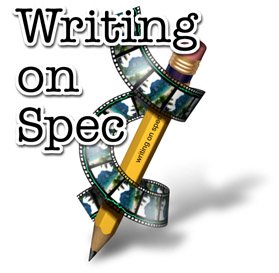Act 1
Wulp, after reading Save The Cat, Write Screenplays That Sell (the Ackerman way) & The Writer's Journey, I've sort of combined them a little to make a little more sense. So, from me, to you... my thoughts on what goes in the first act.
First of all, this is the introduction of the main character in their ordinary world. It's their normal life. Here you want to introduce your main character in such a way as to get the audience to bond with them. This can be done in many ways, but here's a few examples:
a) Show the character as being particularly skilled at their job/work. This would be them having some insight, performing a tricky action, etc.
b) Have them treated unfairly or unjustly. We've all felt the pang of injustice so it's a quick way to get the audience in with the character.
c) Make the character funny/humerous. Tying back into Jane Espenson's blog, this would mean (typically) creating a comic character (one who is serious, but what they say/do is so goofy that it's funny) or a serious character whose dialog is intentionally funny.
d) Create a character who has power (be it political, fantastic or whatever). Gordon Gecko from Wall Street is a character that jumps to mind. So does Magneto from X-Men.
e) Put the character in jeopardy right away. Audiences have a natural tendency to root for the person shown to be in danger.
So now we have about 10 pages (or 10%) of our script to come up with some good "ordinary world" scenes that will bond our character wth the audience. There are many scripts which have the first scene be one bookend and the last scene be the opposite of of that scene to show the development of the character.
At about the 10% mark, something should happen (typically called the 'inciting incident'). This should be an event that starts the story going in the direction it does. It's an event which makes the main character want to in a new direction. This is also called the "call to adventure".
Typically, the character at this point in the story will be lacking something very obvious to the audience, but not them (love, compassion, confidence, etc.).
After the inciting incident, the character will often deny or refuse the call to adventure. They will spend the next 15% (up to the first act break) trying to avoid accepting the call to adventure.
Should the story dictate that the character desires this change, then that 15% (up to the first act break) would consist of the character adjusting to the situation into which they have put themself.
Once the character decides to accept the call to adventure, then they will take an action that should be (in our best case) irrevocable. It should be a point after which they can no longer return to their old life unchanged. Taking the Firm as an example, once Mitch hears about the Firm from the FBI, he can no longer ignore his inklings. He must pursue their suggestions to discover the truth himself (which is the push into act 2).
By breaking things down into smaller chunks and having regular checkpoints, it seems to be easier to approach (it's not, but I feel like it should).
I don't consider this to be a formula, but more like the components of a story.
There are many folks who talk about the formulaic approach in hollywood, but if after reading Vogler's book, I can't help but think that Hollywood is just focusing primarily on the fairie tale type stories, and thus, there are certain requirements in order for a story to meet the requirements of a fairie tale.
Act 2 next...

2 Comments:
This is an excellent breakdown. I'll be interested to see how you diagram Act II, as that's the section that always slows me down (damn you Act II!).
I have to agree with you, it does have the feel of being a formula, but I've been finding such yardsticks essential in my first rewrite. It does help to keep you focused on where you're going.
I think of the "formula" like this...
Let's just go ahead and say that the goal is to write a film that Hollywood would like to make - not many of us have the cash or drive to make our own feature film.
So - with that said, there are only certain kinds of films that really appeal to Hollywood. If we were talking automobiles, we could say, only Cars appeal to Hollywood.
Now, we can have many different colored cars. We can have different sizes and shapes.
There are certain things that are necessary in order for a vehicle to be described as a car.
Eighteen wheels? Nope - a truck (18-wheeler, etc.). Two wheels? Nope - a motorcycle (or bicycle).
My point is that you can write yourself a story that is outside of Hollywood interests - there's nothing wrong with that; however, if you want Hollywood to purchase your script, you can't go writing something they don't want and bitching because they don't buy.
Hollywood is focused on making a profit and niche material is just that - if it's not niche, then it's not formulaic, it's just "that's what makes it what it is."
I don't hear a lot of bitching about the "formulaic" approach to building automobiles. Why so for scripts?
Just my perspective.
Post a Comment
<< Home